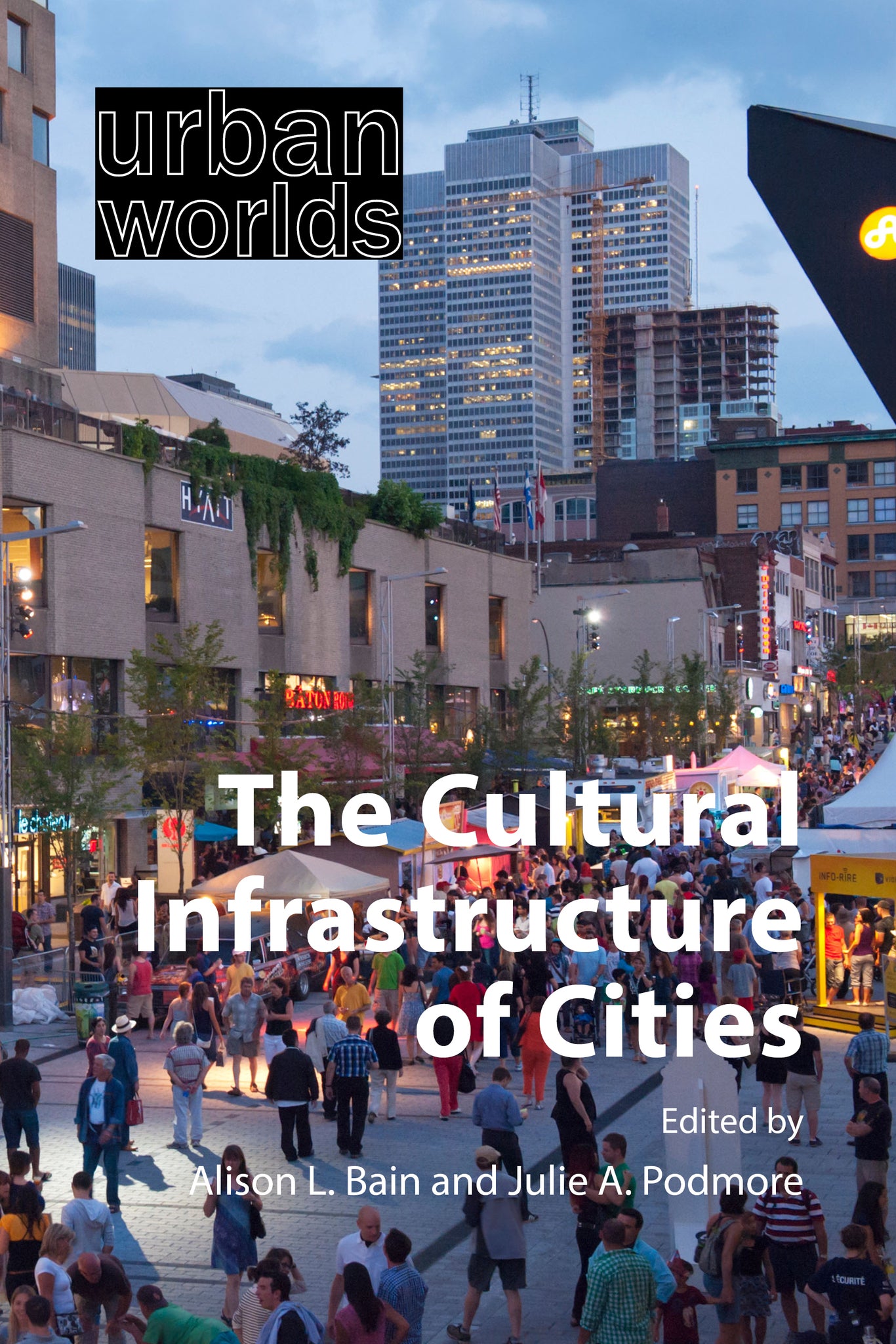We're sorry. An error has occurred
Please cancel or retry.
The Cultural Infrastructure of Cities

Some error occured while loading the Quick View. Please close the Quick View and try reloading the page.
Couldn't load pickup availability
- Format:
-
27 July 2023

Cities are synonymous with the production and consumption of culture. It is their material and human cultural infrastructure that also makes them archives and works of art. The Cultural Infrastructure of Cities critically re-examines the relationship between the urban and its cultures. It expands our understanding of the concept of urban cultural infrastructure and highlights the foundational role of culture to the materiality and sociality of urban life and the governance of cities.
The book begins with a theoretical overview of the cultural and infrastructural turns in urban studies scholarship. It then explores definitions of cultural infrastructure and its “hard” and “soft” dimensions before critically considering the vulnerabilities generated in the cultural sector by the Covid-19 pandemic. Chapters are organised in four thematic sections focusing on aspects of producing, performing, consuming and collecting culture, which feature detailed case studies from 17 cities across the global North and South.
This book will be of interest not only to students and scholars of urban studies, but also to policy-makers planning and creating cultural infrastructures as well as those working in cultural institutions and creative industries.

SOCIAL SCIENCE / Human Geography, Urban and municipal planning and policy, POLITICAL SCIENCE / Public Policy / City Planning & Urban Development, SOCIAL SCIENCE / General, SOCIAL SCIENCE / Sociology / Urban, ART / General, SOCIAL SCIENCE / Anthropology / Cultural & Social, Settlement, urban and rural geography, Urban communities / city life, Urban arts, Material culture, Cultural studies

Examining the diverse forms of infrastructure that facilitate cultural practice and make cities distinctive, this interdisciplinary collection eschews currently dominant but limited explanations of cultural infrastructure grounded in economics and the creative industries by introducing broader insights from across the arts and social sciences. In so doing, it provides policymakers, researchers, and students alike with wide-ranging opportunities to engage with fresh perspectives and to probe the complexities of urban cultural infrastructure as it is lived, made and governed.
1. Introduction: configuring urban cultural infrastructure
Alison Bain and Julie Podmore
Part I: Producing culture
2. Clustering cultural infrastructure in districts
Alison Bain
3. The relational infrastructure of Open Creative Labs
Suntje Schmidt
4. Affordable studio space as cultural infrastructure: land trusts and the future of creative cities
Rhian Scott, Luke Dickens and Phil Hubbard
Part II: Performing culture
5. The infrastructural politics of post-pandemic theatrical performance
Megan A. Johnson and Marlis Schweitzer
6. The performative contingency of cultural infrastructure
Jessie Stein
7. Embodying cultural infrastructure in Carnival
Martha Radice
8. Youthful city-making through peripheral cultural infrastructure
Antonio Moya-Latorre
Part III: Consuming culture
9. Hawker culture and its infrastructure: experiences and contestations in everyday life
Lily Kong and Aidan Wong
10. Aestheticizing hipster retail infrastructure: from Neapolitan to cosmopolitan
Bryan Mark
11. Crafting alternative urban fashion infrastructure in a digital and pandemic age
Taylor Brydges, Deborah Leslie and Norma Rantisi
12. Embodying arts festivals as infrastructural transformation of places
Bernadette Quinn
Part IV: Collecting culture
13. Infrastructuring museums
Friederike Landau-Donnelly
14. Becoming socio-cultural infrastructure: librarizing practices in public libraries
Rianne van Melik
15. Queer counter-topographies: LGBTQ+ community archives as urban cultural infrastructure
Julie Podmore
16. Conclusion: Reconfiguring urban cultural infrastructure
Alison Bain, Julie Podmore and Chan Arun-Pina



